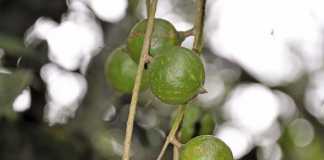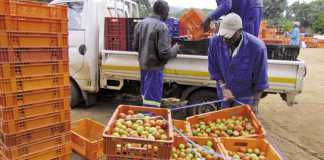Following the article“Untapped emu oil well –a lucrative alternative?” published in Farmer’s Weekly on 19 October 2006, SA emu farmer Shane Trollope was inundated with more than 300 enquiries about this new and potentially lucrative enterprise.
As a result Shane and the SA Emu Association hosted an Emu Information Day on his farm. Lloyd Phillips discovers some valuable management tips for aspirant emu farmers.
Oil from the rendered-down fat of emus can be used in animal and human pharmaceutical products and in cosmetics, depending on the grade of oil. All refined emu oil used in local products is currently imported, with 25ml of this oil presently sold for up to R85.
A number of forward-thinking individuals, including Shane Trollope of the Blue Gum Emu Ranching Company (Berc) near Kokstad, KwaZulu-Natal, have already begun breeding up local emu populations from imported stock with the intention of eventually having large enough populations to begin producing their own emu oil instead of importing it. There are already an estimated 7 000 emus in SA, and the SA Emu Association (SAEA) has been established to promote a sustainable, economically viable emu industry through cooperation between all stakeholders.
SAEA chairperson Peter Duncan, who runs the African Emu Ranch near Muldersdrift, Gauteng, says, “The local emu industry is still in its growth stage. Farmers are building up stock numbers to where they can begin processing. Therefore, it is currently very difficult to get hold of breeding stock if one wants to break into the industry, and when stock is available it is very expensive.
“The local industry is only 10 years old and farmers who are breeding emus have to rely mostly on management information gleaned from overseas sources. We depend on each other to share any new information that could help us to produce emus effectively under South African conditions.”
Area and fencing
Despite the emu being a native of the Australian outback, the US has the world’s largest emu farming industry. Dr Joan Jefferey, an extension veterinarian with the Texas Agricultural Extension Service, says each breeding adult emu pair in an enterprise should be allocated an area of 0,05ha to 0,1ha in the communal fenced-off pen. The majority of Shane’s emus are kept outdoors on grassed enclosures with either natural or simple artificial shelter in case of extreme weather conditions.
“For the first four days after hatching, my emu chicks are confined to a heated room. After four days they are allowed daylight access to a grassed enclosure during good weather, but are confined again at night or during bad weather until they are six weeks to eight weeks old,” Shane explains. “Thereafter, although they are put in an enclosure with young birds of a similar age, their facilities are much the same as the adult birds.”
Dr Jefferey says although a 1,51m fence should be adequate for holding adult emus, some sources prefer 1,68m to 1,83m high fencing topped with single-strand wire. Shane uses 1,2m jackal fencing topped with high-tensile wire at a 10cm spacing to enclose young emus. Droppers are spaced every metre to keep tension on the top six strands. The narrow mesh of the jackal fencing prevents the emus’ legs from getting caught and breaking.
Berc’s adult emus are enclosed with 1,8m diamond mesh supported and held taut with three strands of wire. This wire is spaced at the bottom, middle and top respectively of the diamond mesh.
Shane explains, “Emus, especially during mating season, can damage a loosely constructed fence. I don’t use bonnox fencing because it can allow their legs through and result in injury. Ensure there are no jagged edges, including the wire knots, on the side of the fence facing the birds as they can be injured on these edges as they run up and down along the fence. If possible all fencing poles and droppers should be located on the outside of the fencing.”
Peter warns that no sharp objects should be left on the ground of an enclosure because the birds are likely to swallow them, causing internal injury. Therefore, trees without thorns should be used to provide natural shelter. It is also not unheard of for emus to swallow padlocks, small chains and sets of keys. Shane recommends keeping keys on a long lanyard so that they can be pulled out of an emu’s throat should the bird get hold of them.
Emu feed
Until the end of 2006 there was no specific feed ration available for SA’s emu farmers to feed their birds. Thanks to its hardy nature, farmers were able to successfully use ostrich and even rabbit mix for feed.However, it is always in the best interests of achieving maximum chick production and bird feed conversion efficiency to have a ration developed specifically suited to the emus’ digestive and growth requirements.
“The SA Emu Association recently convened a committee to meet with local feed manufacturers about producing a pure emu ration,” says Peter. “In conjunction with an international animal feed expert and Afgri Animal Feeds, a breeding ration has been developed and is now available for local emu farmers.”
According to SAEA this breeder ration is in line with Australian emu feed guidelines, and consists of 15% protein, 4,5% fat, 7,2% fibre, 3% calcium and 0,9% phosphorous. This ration can be fed to adult emus throughout the year without a supplemental maintenance ration. Unfortunately, there is no information available regarding the emu’s vitamin and mineral requirements.
Afgri has also been given permission by the SAEA to mix Diatomaceous Earth (DE) into the emu ration at a rate of 15kg/ton of feed to act as a dewormer for the emus. DE will only be added to the ration at the request of the emu farmer. The current cost per bag for the emu breeder ration, excluding transport and the addition of DE, is R100,25, and its order code with Afgri Animal Feeds is 02460P Emu Breeder.
Health and biocontrol
While there are currently no known diseases that affect emus in the country, avian health experts are encouraging farmers to begin implementing measures to reduce the likelihood of diseases eventually striking the fledgling emu industry. Dr Jefferey notes that internal and external parasites affect emus.
“Ivermectin given at one-month intervals beginning at one month of age is used to prevent nematode infestations. Carbaryl dust [5% powder] has been used by the US Department of Agriculture at 14-day intervals to treat tick infestations in ratites, of which the emu is a species,” she explains. “Health problems peculiar to the emu include: eastern equine encephalitis (EEE) virus infection which can cause a severe bloody diarrhoea; parasitic migration in the brain by Chandlurella quiscali, a nematode parasite of the grackle bird species carried by biting insects; and scoliosis, a deviation of the neck and spinal cord that may be of parasitic, hereditary or nutritional origin. Preventative care includes vaccination for EEE and sometimes avian pox, and the treatment or prevention of parasitic infections.”
Contact SAEA on (018) 298 1306, e-mail [email protected] or visit www.emu.org.za.
Contact Shane Trollope on (039) 747 4697, 082 215 3241, e-mail [email protected].
Contact Peter Duncan on
082 404 9606, e-mail [email protected] or visit www.emu.co.za. |fw
Tips on biosecurity for your emu enterprise
It is essential for the enterprise’s management to set practical physical standards for biosecurity of the emu operation. These standards include:
Personal hygiene: while one hygiene programme will not fit all farms, it is important for management to make sure that staff follow a number of steps. These include properly showering in and showering out of the emu enterprise; no articles of personal clothing should be allowed into the operation; clean working clothes and caps must be provided to all staff and management entering the operation; and all used working clothes must be disposed of in a laundry basket for cleaning before next use.













